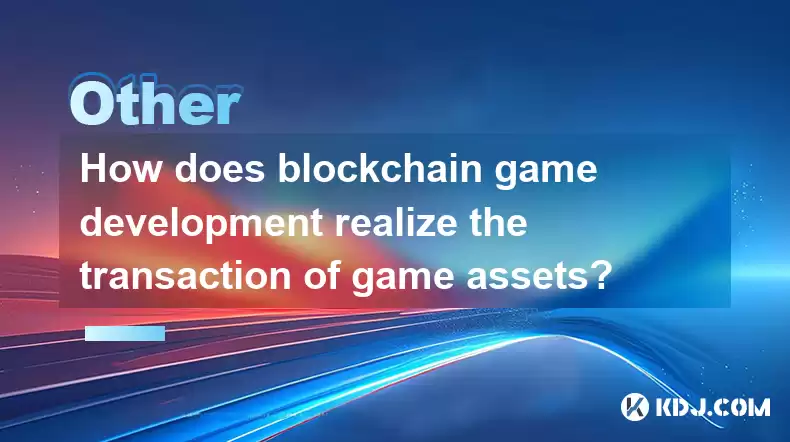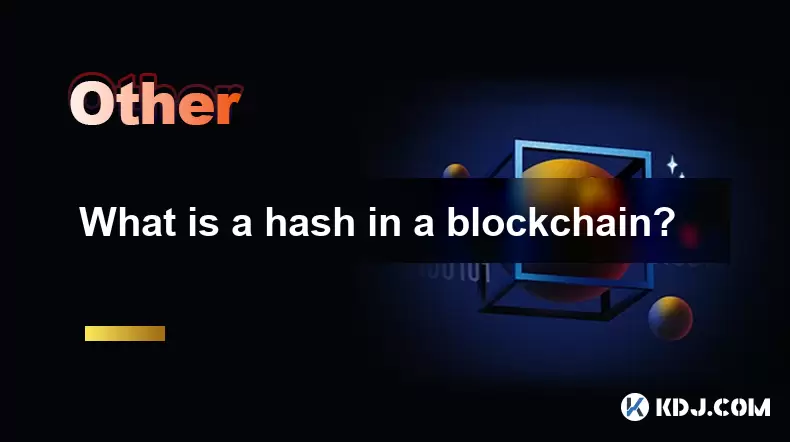-
 Bitcoin
Bitcoin $113000
-1.26% -
 Ethereum
Ethereum $3435
-3.79% -
 XRP
XRP $2.836
-5.53% -
 Tether USDt
Tether USDt $0.9997
0.00% -
 BNB
BNB $746.1
-1.80% -
 Solana
Solana $160.4
-3.48% -
 USDC
USDC $0.9997
0.00% -
 TRON
TRON $0.3206
-1.47% -
 Dogecoin
Dogecoin $0.1936
-6.02% -
 Cardano
Cardano $0.6980
-3.36% -
 Hyperliquid
Hyperliquid $37.28
-2.82% -
 Sui
Sui $3.340
-5.59% -
 Stellar
Stellar $0.3695
-5.87% -
 Chainlink
Chainlink $15.70
-3.74% -
 Bitcoin Cash
Bitcoin Cash $529.2
-2.94% -
 Hedera
Hedera $0.2304
-6.83% -
 Avalanche
Avalanche $21.00
-3.13% -
 Toncoin
Toncoin $3.620
0.53% -
 Ethena USDe
Ethena USDe $1.000
-0.01% -
 UNUS SED LEO
UNUS SED LEO $8.959
0.11% -
 Litecoin
Litecoin $105.0
-0.05% -
 Shiba Inu
Shiba Inu $0.00001185
-2.58% -
 Polkadot
Polkadot $3.495
-2.45% -
 Uniswap
Uniswap $8.808
-2.07% -
 Monero
Monero $292.9
-2.80% -
 Dai
Dai $0.9998
-0.01% -
 Bitget Token
Bitget Token $4.258
-1.43% -
 Pepe
Pepe $0.00001006
-4.02% -
 Cronos
Cronos $0.1273
-5.20% -
 Aave
Aave $250.1
-2.39%
How does blockchain game development realize the transaction of game assets?
Blockchain game development uses smart contracts, decentralized marketplaces, and token standards to enable secure, transparent transactions of game assets like NFTs.
Apr 16, 2025 at 02:36 pm

How does blockchain game development realize the transaction of game assets?
Blockchain technology has revolutionized various industries, including the gaming sector. One of the most significant advancements in gaming is the ability to transact game assets securely and transparently. This article delves into how blockchain game development realizes the transaction of game assets, exploring the mechanisms, benefits, and practical applications.
Understanding Blockchain in Gaming
Blockchain technology is a decentralized ledger system that records transactions across numerous computers, ensuring that the data cannot be altered retroactively without altering all subsequent blocks and the consensus of the network. In gaming, blockchain is used to create and manage digital assets, such as in-game items, characters, and currencies, which can be traded securely and transparently.
The integration of blockchain into games allows for the creation of non-fungible tokens (NFTs), which are unique digital assets that represent ownership of a specific item or piece of content. These NFTs can be traded on blockchain marketplaces, providing gamers with the ability to monetize their in-game achievements and assets.
Mechanisms of Asset Transaction in Blockchain Games
The transaction of game assets in blockchain games is facilitated through several key mechanisms:
Smart Contracts: These are self-executing contracts with the terms of the agreement directly written into code. In blockchain games, smart contracts automate the buying, selling, and trading of game assets. When a player decides to sell an asset, the smart contract executes the transaction automatically upon meeting the predefined conditions, ensuring that both parties adhere to the terms of the trade.
Decentralized Marketplaces: Blockchain games often have integrated decentralized marketplaces where players can list their assets for sale or purchase assets from other players. These marketplaces operate on blockchain networks, ensuring that transactions are transparent and secure. Players can browse available assets, negotiate prices, and complete transactions without the need for intermediaries.
Token Standards: Standards like ERC-721 and ERC-1155 on the Ethereum blockchain define how NFTs are created and managed. These standards ensure that game assets can be easily transferred between different wallets and marketplaces, facilitating seamless transactions.
Benefits of Blockchain for Game Asset Transactions
The use of blockchain for game asset transactions offers several significant benefits:
Security and Transparency: Blockchain's decentralized nature ensures that transactions are secure and transparent. Each transaction is recorded on the blockchain, making it immutable and verifiable by anyone on the network. This reduces the risk of fraud and ensures that players can trust the integrity of their transactions.
Ownership and Control: Blockchain enables true ownership of digital assets. Players have complete control over their in-game items, allowing them to sell, trade, or use them as they see fit. This contrasts with traditional games where assets are often controlled by the game developers.
Liquidity and Monetization: Blockchain games provide players with the opportunity to monetize their in-game achievements. By selling rare or valuable assets, players can convert their gaming efforts into real-world value, enhancing the overall gaming experience and potentially generating additional income.
Practical Applications of Blockchain in Game Asset Transactions
Several blockchain games have successfully implemented asset transaction systems, showcasing the practical applications of this technology:
CryptoKitties: One of the earliest blockchain games, CryptoKitties allows players to buy, sell, and breed unique digital cats. Each cat is an NFT, and transactions are facilitated through the Ethereum blockchain. Players can trade their cats on various marketplaces, demonstrating the real-world value of in-game assets.
Axie Infinity: This game combines elements of pet collecting and battling, with each Axie being an NFT. Players can earn cryptocurrency by participating in battles and selling their Axies on the game's marketplace. The game has created a thriving economy around its digital assets, showcasing the potential for blockchain in gaming.
Decentraland: A virtual reality platform where users can buy, sell, and develop land parcels, Decentraland uses the Ethereum blockchain to manage its digital assets. Players can create and monetize content, such as games and experiences, on their land, demonstrating the versatility of blockchain in gaming.
Challenges and Considerations
While blockchain offers numerous benefits for game asset transactions, there are also challenges and considerations to keep in mind:
Scalability: Blockchain networks can face scalability issues, leading to slow transaction times and high fees. Game developers must consider these limitations when designing their asset transaction systems to ensure a smooth player experience.
User Experience: The complexity of blockchain technology can be a barrier for some players. Game developers need to create user-friendly interfaces and educational resources to help players understand and engage with blockchain-based asset transactions.
Regulatory Compliance: The legal landscape surrounding blockchain and cryptocurrencies is still evolving. Game developers must navigate regulatory requirements to ensure that their asset transaction systems comply with relevant laws and regulations.
Frequently Asked Questions
Q: Can I use traditional payment methods to buy blockchain game assets?
A: While some blockchain games may offer the option to purchase assets using traditional payment methods, most transactions are conducted using cryptocurrencies. Players typically need to acquire the relevant cryptocurrency, such as Ethereum, to participate in asset transactions.
Q: How do I ensure the security of my blockchain game assets?
A: To ensure the security of your blockchain game assets, use reputable wallets and follow best practices for securing your private keys. Additionally, be cautious of phishing attempts and only engage in transactions on trusted marketplaces.
Q: Are there any fees associated with blockchain game asset transactions?
A: Yes, blockchain game asset transactions often involve fees, such as gas fees on the Ethereum network. These fees can vary based on network congestion and the complexity of the transaction. Players should be aware of these costs when engaging in asset transactions.
Q: Can I transfer my blockchain game assets to other games or platforms?
A: The ability to transfer blockchain game assets to other games or platforms depends on the specific game and the standards used for the assets. Some games may support interoperability, allowing assets to be used across different platforms, while others may be limited to their own ecosystem.
Disclaimer:info@kdj.com
The information provided is not trading advice. kdj.com does not assume any responsibility for any investments made based on the information provided in this article. Cryptocurrencies are highly volatile and it is highly recommended that you invest with caution after thorough research!
If you believe that the content used on this website infringes your copyright, please contact us immediately (info@kdj.com) and we will delete it promptly.
- Bitcoin, XRP, and the Price Drop Blues: What's Shakin' in Crypto?
- 2025-08-03 00:30:12
- Cold Wallet, Troncoin, and Shiba Inu: Navigating Crypto Opportunities in the Concrete Jungle
- 2025-08-03 01:51:38
- Crypto Presales: Navigating the Hype with BlockchainFX and Beyond
- 2025-08-03 01:51:39
- Bank of America, Ripple, and RLUSD: A New Era in Digital Finance?
- 2025-08-03 00:30:12
- Bitcoin Strategy: Saylor's Not Hoarding, He's Building an Empire
- 2025-08-02 22:30:12
- Bitcoin Bloodbath: Macro Pressures and Liquidations Unleash Crypto Chaos
- 2025-08-02 22:30:12
Related knowledge

What is the difference between on-chain and off-chain transactions?
Aug 02,2025 at 04:22pm
Understanding On-Chain TransactionsOn-chain transactions refer to digital asset transfers that are recorded directly on a blockchain ledger. These tra...

What is the double-spending problem and how does blockchain prevent it?
Aug 02,2025 at 01:07pm
Understanding the Double-Spending ProblemThe double-spending problem is a fundamental challenge in digital currency systems where the same digital tok...

What is the difference between a blockchain and a database?
Aug 01,2025 at 09:36pm
Understanding the Core Structure of a BlockchainA blockchain is a decentralized digital ledger that records data in a series of immutable blocks linke...

How does blockchain handle scalability?
Aug 02,2025 at 02:58pm
Understanding Blockchain Scalability ChallengesBlockchain scalability refers to a network's ability to handle an increasing volume of transactions wit...

What is a hash in a blockchain?
Aug 02,2025 at 05:28am
Understanding the Concept of Hash in BlockchainA hash in the context of blockchain technology refers to a unique digital fingerprint generated by a cr...

What is a hash in a blockchain?
Aug 02,2025 at 04:43am
Understanding the Concept of Hash in BlockchainA hash in the context of blockchain technology refers to a unique digital fingerprint generated by a cr...

What is the difference between on-chain and off-chain transactions?
Aug 02,2025 at 04:22pm
Understanding On-Chain TransactionsOn-chain transactions refer to digital asset transfers that are recorded directly on a blockchain ledger. These tra...

What is the double-spending problem and how does blockchain prevent it?
Aug 02,2025 at 01:07pm
Understanding the Double-Spending ProblemThe double-spending problem is a fundamental challenge in digital currency systems where the same digital tok...

What is the difference between a blockchain and a database?
Aug 01,2025 at 09:36pm
Understanding the Core Structure of a BlockchainA blockchain is a decentralized digital ledger that records data in a series of immutable blocks linke...

How does blockchain handle scalability?
Aug 02,2025 at 02:58pm
Understanding Blockchain Scalability ChallengesBlockchain scalability refers to a network's ability to handle an increasing volume of transactions wit...

What is a hash in a blockchain?
Aug 02,2025 at 05:28am
Understanding the Concept of Hash in BlockchainA hash in the context of blockchain technology refers to a unique digital fingerprint generated by a cr...

What is a hash in a blockchain?
Aug 02,2025 at 04:43am
Understanding the Concept of Hash in BlockchainA hash in the context of blockchain technology refers to a unique digital fingerprint generated by a cr...
See all articles

























































































